




































] by Monique Balvert-O’Connor
Speaking after winning the coveted Young Horticulturist title at the finals in Karaka recently, England said her feeling of disbelief over the win quickly turned to one of “great excitement”. Her partner, parents and employers were all there to share the moment.
England represented the Young Plant Producer sector and works as a sales co-ordina-

tor for Elliott’s Wholesale Nursery based in Amberley. She has a Bachelor of Commerce degree in Information Systems, a Diploma in Horticulture and is only seven months off completing her part time studies toward a diploma in Primary Industry Business Management.
The judges said they were impressed with how England applied her knowledge in busi-
ness and IT, as well as horticulture, to a diverse role. They noted how her approach of continuous learning and working with different people to get great results is sure to see her continue to thrive.


England was up against four other finalists representing different sectors within the horticulture sector.







In the 1960s the Government of the day created a Royal Commission headed by Sir Owen Woodhouse to investigate and provide a report on the possibility of New Zealand having a citizen’s right to compensation for injury caused by accident. That would mean that no-one could initiate Court proceedings for compensation and the right to do so would be abolished.
Until then anyone who had suffered injuries had to seek compensation against the party which caused the accident through the Court. Any right to seek compensation had been abolished.
] Ronald W Angland & Son
After some years the Government accepted the recommendations of Sir Owen’s report and passed the legislation, and our initial system became the law in NZ. Since then it has developed exponentially.
The ACC was pretty unique in the world and many overseas visitors to NZ are surprised when they are told that no action may be taken for compensation for their injuries against the other party involved.
The first Accident Compensation Act was passed into our legal system in 1972 and a new Act was passed in 2001 replacing the original legislation. There have been a number of amendments to the Act since then.
In rare circumstances an injured person may be eligible for exemplary damages where the party causing the injury acted recklessly and the exemplary damages may be awarded to the victim of the “accident.” Such claims and awards are very rare and are to punish the wrong-doer.
Accident compensation covers injury to the person. It does not cover illness, old age deterioration or mental health issues. If an NZer returns to NZ after suffering an accident overseas ACC may assist to cover costs.
Visitors to NZ are also eligible for ACC cover for accident which occurred while in New Zealand.
Recently there has been some publicity about whether overseas visitors should be eligible for ACC as the result of an accident which occurred while they were in New Zealand. Many people seemed to be of the view that overseas visitors should not be able to claim ACC for accidents which occurred while they are in NZ.
They should pursue any claims they may have through the Courts. Respectfully, it would be absurd if someone from overseas could sue in the NZ courts for compensation as the result of an accident in NZ when NZ citizens are not able to sue for compensation as the result of an accident.
The rate of compensation payable to an injured person is 80% of the applicant’s weekly income while recovering from injuries suffered in the accident. If the injury is permanent a lump sum may be payable. ACC also provides assistance to retrain when an injured person is unable to return to their former occupation.
If you are involved in an accident and intend to seek ACC it is essential that you contact ACC as soon as possible after the accident has occurred.
This article has been prepared by bessie Paterson a partner at ronald W Angland & Son, Lawyers, 2 chapman Street, Leeston.






scholarships and products.








The competition is renowned for its rigor and finalists are judged on several challenges including practical skills, industry expertise, leadership ability, business knowledge and communication.
England’s first prize included $7,500 cash, plus a $7,500 Professional Development Package, including travel and accommodation.
England said she’ll spend the next wee while “dreaming up” where she may travel to further pursue “this amazing career of mine in horticulture”.








The five competing Young Horticulturist competition sectors represented this year were: New Arborist (New Zealand Arboriculture Association Inc); Young Amenity (New Zealand Recreation Association); Young Viticulturist (New Zealand Winegrowers); Young Grower (Horticulture New Zealand Fruit & Vegetable Sectors); and Young Plant Producer (New Zealand Plant Producers Incorporated). The five competitors were selected as finalists after competition placings within their own industries.
Kyla Mathewson of Dunedin was awarded second place. Mathewson, a curator of the geographic collection at Dunedin Botanic Gardens, represented the Young Amenity sector. Third place went to Craig Scott of Motueka, representing the New Arborist sector.
Young Horticulturist chairperson Shaun Trevan said the finalists who competed over two days at Karaka represented the best in young horticultural talent in New Zealand.
“They are highly competent and forwardthinking young people seeding the country’s horticultural future,” Trevan said.
The competition’s 2024 prize pool equates to more than $56,500 in cash, professional development and leadership
The second prize was $5,000 cash, plus the same amount for professional development including travel and accommodation, while third place received $2,500 in cash and same amount for professional development.
Trevan said the Young Horticulturalist of the Year competition is important for horticulture in New Zealand and couldn’t occur without the support of official partners, supporters, and friends of the competition. The official sponsors were: Woolworths, Fruitfed Supplies and T & G Fresh and the silver sponsors were: Bayer, Craigmore Sustainables and Horticentre Charitable Trust.
The competition also included Woolworths Innovation Project Prizes. First place ($5,000) went to Kyla Mathewson, with England in second place ($2,500), and Taylor Leabourn (representing the Young Grower sector) in third place ($1,500).
Nelson orchardist Meryn Whitehead won the competition last year. The 2022 winner was Regan Judd, also an orchardist, while viticulturists took the top prize in the three preceding years.









The third annual Canterbury Clash of the Colleges stuck a stunning day at the recent Ashburton A&P Show with Christchurch based girl’s school Rangi Ruru dominating the senior competition.
It was the first time the competition had been held in conjunction with the Ashburton Show.
Established by the New Zealand Rural Games Trust, the Clash of the Colleges is a fast-paced, race-style competition offering students hands-on experience in various aspects of the rural sector.
Teams of four compete in 16 modules, all run by experts and members of Hinds Young Farmer Club with support from students from Ashburton College.
Agri Futures general manager Daniel O’Regan said the third Canterbury Clash was a huge success and thanked the team at the Ashburton A&P Show for providing an exceptional venue and an event that is a well-run machine.
“We had students from Oamaru to Christchurch participate in the activities that tested students’ knowledge across agriculture and horticulture,” O’Regan said.
“It was fantastic to have Rangi Ruru clean sweep the seniors especially as the school doesn’t yet have Ag and Hort classes.”
The Rangi Ruru Junior team also finished second in its grade.
The schools involved this year were: Beaconsfield Primary, Ashburton College, Mt Hutt College, Craighead College, Rangi Ruru College, Waimate College, Waihi and Waitaki Boys’ and Girls’.
The modules facing the students included ATV safety, tree identification, attaching a fence insulator, break fencing, irrigation set, feeds and weeds, shearing handpiece set-

up, wool classing, gumboot throwing, sulky racing, CT scanning, First Aid, recycling and seeds, grains and pulses.
Top place getters were:
Seniors: First: Rangi Ruru: Tabitha White, Mikayla Malloy, Milli Pottinger, Charlotte Slater; Second: Rangi Ruru: Brooke Cooper, Laura Kelso, Sophie Orchard.
Juniors: First: Waimate High School: Jonty Charles, Lewis Gardiner, Blake Paling, Fergus Robertson; Second: Rangi Ruru: Bonnie Collier, Brie Malloy, Phoebe Hore, Joannah Mulcock; Third: Waimate High School: So-

Leeston (03) 324 3033
Email: lawyers@anglands.co.nz | www.anglands.co.nz Solicitors of Selwyn since 1965

phie Hargreaves, Briar Craig, Penny Smith, Zaylee Davis.
Intermediate: First: Craighead Diocesan: Neve Gordon, Kaitlyn Saywell, Harriet Harley, Georgia O’Sullivan; Second: Waihi School: George Neal, Sam Westgarth, George Brown, Otto Acland.
Gumboot Throwing: Senior and overall champion: Charlotte Connolly of Craighead Diocesan; Junior Girl: Briar Craig of Waimate College; Junior Boy: Blake Paling of

Waimate College; Intermediate Girl: Georgia O’Sullivan of Craighead Diocesan; Intermediate Boy: Samuel Westgarth of Waihi School.








































This Government is opening doors for our primary exporters to thrive on the world stage. Over the past year, we’ve achieved significant milestones that will boost the prosperity and productivity of rural New Zealand, support job creation, and put more money in the pockets of everyday Kiwis.
Last month after 18 years of negotiations, we concluded our second, high-quality, trade agreement in the middle east, with the Gulf Cooperation Council (GCC), a bloc of six nations that make up the ninth-largest economy in the world.
This deal is the GCC’s first with a major agricultural exporter and is the most comprehensive agreement they’ve signed to date.
Our two-way trade with the GCC is already worth over $3 billion annually, of which New Zealand exports $2.6 billion.
This includes $1.8 billion in dairy, $260 million in red meat, and $72 million in horticulture. Under the new agreement, 99 per cent of our exports will enjoy duty-free access over the next decade and when combined with our recently concluded Comprehensive Economic Partnership Agreement with the UAE, 51 per cent of exports to the region will be tariff-free from day one.
These agreements secure market access in a highly competitive market and unlock immense opportunities for our farmers and exporters, providing them with the confidence to grow their businesses in one of the world’s most dynamic regions. Experience shows that once trade barriers are removed, export volumes increase rapidly, and the GCC market will be no different.
The GCC deal is just one of many agreements this Government has secured to benefit rural New Zealand. Earlier this year, we delivered an early entry into force of our Free Trade Agreement with the European Union. This agreement saves Kiwi exporters $100 million in annual tariffs — including an additional $43 million for our kiwifruit growers, and $3 million for onion exporters, this season thanks to the earlier entry.
In September we concluded a Comprehensive Economic Partnership Agreement with the UAE in just over 4 months, making this New Zealand’s fastest-ever trade agreement negotiation, and the most trade liberalising of any of the UAE’s CEPAs to date.

The Agreement eliminates duties on 98.5 per cent of New Zealand’s exports immediately on entry into force, rising to 99 per cent within three years, unlocking a key top 20 export market and contributing to our ambitious target of doubling exports by value in ten years.
We have also stood up for dairy access into Canada as guaranteed under the Comprehensive and Progressive Agreement for Trans-Pacific Partnership (CPTPP). Canada continues to breach their obligations, blocking access for New Zealand dairy exporters and we are holding them to account.
This is a matter of principle. Canada must meet its obligations or compensate us for the harm caused. We will continue to stand up for the rights of hard-working Kiwi exporters.
Finally, just last week at APEC, we signed
The Agreement on Climate Change, Trade and Sustainability (ACCTS), with Costa Rica, Iceland and Switzerland. This removes tariffs on 45 wood and wool products.
These sectors are critical to our plan to double New Zealand’s exports by value over the next decade, while highlighting New Zealand’s competitive advantage in sustainable and high-quality production.
Beyond trade agreements, we are relentlessly promoting Kiwi exporters overseas. In the past year, we have delivered eight trade missions to USA, Singapore, Thailand, the Philippines, Japan, Malaysia, South Korea, Brazil, and China with accompanying business delegations representing more than 128 Kiwi companies.
Countries visited include the Brazil, China, Japan, Malaysia, the Philippines, Singapore, South Korea, Thailand, and the United States.
‘canada
continues to breach their obligations, blocking access for New Zealand dairy exporters and we are holding them to account.







Once we have survived Show and Cup week we turn towards Christmas and our local community.
Like so many of my age group, Christmas in the rural sector was very special, not because of the religious side, which was very important, but the bringing together of neighbours and others.
Remembering the religious side for a moment, I still remember the vicar at the Mayfield church saying he was skipping the prayer for fine weather as the stock farmers needed rain, and the cropping farmers wanted fine hot weather. When
characters were the norm.
Perhaps more to the point was the arrival of trucks with bands coming up the drive to bring cheer in return for funds to keep them going.
The silver band, the Salvation army band playing hymns, and the pipe band turning the house cow off her milk.
I remember a fair number of bottles of cheer being handed onto the trucks as well, but that didn’t seem to affect the music ability.
Apart from local fire brigades and perhaps service clubs, there are few reasons for farming families to get together.
I hesitate to suggest that rural churches have lost their pull in our modern world, but the number that seem to be closed now does seem to suggest that.
Obviously, city folk have the advantage of summer holidays while farming folk face constant workloads, plus the city types have close access to restaurants etc. that rural don’t so what can we do to bring back the festive side of Christmas.
The easiest thing is to invite others to a barbecue or a cricket game at a local domain. The point is to create an event that will
bring people together, even for a few hours. We all know that organizing something can end up in the too hard bin very quickly. Grasp the nettle and do something.
There are many farm workers who are from overseas and therefore can’t be with friends and family for the festival, I am sure they would love to spend time with others, even learning to play cricket or tennis.
It is very similar to what “lean on a gate and talk to a mate” is doing for you and your friends, all it will take is a little thought and deciding it will be fun for everyone.
The Government is backing a new world-leading programme set to boost vineyard productivity and inject an additional $295 million into New Zealand’s economy by 2045.
] by Kent caddick
Agriculture Minister Todd McClay, who announced the initiative, said the Next Generation Viticulture programme will transform traditional vineyard systems, increasing profitability by $22,060 per hectare by 2045 without compromising wine quality.
The Government is co-investing $5.6 million over seven years in partnership with New Zealand Winegrowers Incorporated and several vineyards to drive profitability through innovative canopy management systems.
“This initiative is about ensuring New Zealand’s wine industry remains a global leader in both quality and sustainability,” McClay said.
“We are providing the sector with the tools to boost productivity and long-term profitability.”
McClay said building on success seen in the Kiwifruit and Apple industries, the programme employs a renewed approach to canopy management and growing configurations, enabling vines to intercept more light.
“This programme will increase productivity and ensure the long-term viability of our wine industry, all while maintaining the exceptional quality we are internationally known for.”
Seven vineyards, supported by the Bragato Research Institute will trial the programme.
“It’s a great example of how the Government and industry can work together to achieve lasting economic benefits,” McClay said.


















It was a brilliant day at the Ashburton A&P Show last month. The Clash of the Colleges was a success, with enthusiastic students from schools across Oamaru to Christchurch participating in activities that tested their abilities in agriculture and horticulture.
] with Jo Luxton
] Labour spokesperson for Agriculture
I was incredibly impressed by the students’ enthusiasm and expertise. Congratulations are due to the top placers from Rangi Ruru Girls’ School, Waimate High School, Craighead Diocesan School, and Waihi School, who displayed outstanding skills across a range of agricultural tasks.
Competitions like these are crucial in sparking interest in the agricultural sector.
They offer students the opportunity to apply themselves to real-world scenarios, whether that’s identifying tree species, setting up irrigation systems, or wool classing.
These events are not just about competition, they are about building self-belief, creating connections, and fostering an understanding of agriculture as a diverse and dynamic industry.
Some schools in New Zealand are going the extra mile by tailoring their curriculum options for agriculture, including farming
practices and the evolving agri-tech and environmental sectors.
Back in September, I visited Katikati College, a rural school in the Western Bay of Plenty, that offers courses covering everything from agribusiness and environmental sustainability to practical farming techniques.
Their real-life learning takes place in orchards, nurseries, and other local businesses, preparing students for a wide range of careers within the agriculture industry.
Schools like these are showing our young people that agriculture is as much about innovation as it is about tradition.
The key to future-proofing New Zealand’s economy and identity lies in offering diverse opportunities for young people to engage with the sector, empowering them to consider agriculture as a rewarding and innovative career path – one young person at a time.
And it appears that our young people will make the most of the opportunities provided to them. Watch out – opportunities like Clash of the Colleges will set our young people on a track to be the future leaders of agriculture.






Te Tiriti o Waitangi is our country’s founding agreement. It underpins a just society in which diversity is a strength. It honours a simple principle: that the power of our nationhood begins with the bond of respect.
] with Steve Abel
Green Party ] Spokesperson for ] Agriculture
New Zealand’s founding agreement upholds the right to self-determination for Maori – the first New Zealanders. It’s a living document that ensures dignity and belonging for all who make Aotearoa home. It is, in the words of Moana Jackson, “a profound and visionary base on which to build a country”.
On the other hand, David Seymour’s unprincipled attempt to distort the essential meaning of te Tiriti is ignorant and divisive. It will fail because most New Zealanders agree with our nation’s founding idea – that by working together we become a better country.
Te Tiriti gives those of us from other parts of the world – whether we arrived recently or generations ago – the pathway to a legitimate sense of belonging and a home in New Zealand.
The history of colonised countries is grisly. Settler presence is achieved either by consent of the locals or by force and theft. New Zealand has a history of both.
But we have something that few colonised nations have: a founding agreement between
two sovereign states – the British Crown and chiefs of the Maori nations – which was achieved by negotiation.
Te Tiriti recognised the sovereignty of Maori, and right to possession of their lands, waters and treasures; it afforded the British the right to govern their own people in these lands; it extended the rights of British citizens to Maori in the third article thereby affirming equality; and it gave the newcomers the right to purchase land.
In an oral exchange on our founding day –6 February 1840 – all parties also committed to freedom of religion and culture.
The Treaty Principles Bill is another sad episode in a long history of theft from Maori and disdain for our foundation. This time it erases the unique identity of Maori expressed in te Tiriti.
By mangling the meaning of the Maori text, it has the effect of nullifying indigenous sovereignty (tino rangatiratanga). This is the opposite of what te Tiriti enshrined for Maori in New Zealand.
It was clearly the intent of those who drafted te Tiriti to recognise the sovereignty of Maori over their lands and waters. To achieve this, te Tiriti differentiated Iwi from the British Crown.
The Treaty Principles Bill intends to erase

this differentiation under the false pretence that universal equality is irreconcilable with Te Tiriti. This could not be further from the truth.
Te Tiriti affirms the right of Maori to look after their lands and people, this benefits all of us and brings us closer to addressing inequalities. The attempt to rewrite Te Tiriti is not about equality, it is about an ideological view that our founding agreement is a barrier to free-market exploitation of nature.
The importance of te Tiriti comes down to one word: relationship. You don’t maintain any relationship by nullifying the history on
which it is built, or by denying the other party’s right to self-determination. Myself and my Green Party colleagues were proud to stand among the tens of thousands who joined the peaceful hikoi to parliament in defence of te Tiriti.
Helmut Modlik, the head of Te Runanga o Toa Rangatira, said something outside Parliament that is profound in its simplicity: “To those who would divide us, it is too late. We are already one people.”
Our Te Tiriti o Waitangi is a sacred bond and a unique founding agreement that should be celebrated, honoured, and upheld.
The transition from spring to summer generally brings those warmer weather patterns that can catch people off guard.


] by craig Pauling
] ECan chair
While Canterbury’s infamous nor-westers cause hot, sunny weather on the plains –they often coincide with torrents of water flowing down from the Southern Alps – Ka Tiritiri o te Moana.
We saw this during late October and early November, when heavy rain from the west caused rivers across the region rise to rise steadily, prompting our staff to issue flood advisory notices. Fortunately, there was no major flooding in Waitaha/Canterbury.
The good news is our region’s ability to cope with such weather events is improving. Notably, we’ve recently completed a major programme of work to restore Waitaha’s resilience to flooding, born off the back of the May 2021 event that prompted a region-wide State of Emergency.
The project focused on more than 400 repair jobs. This included rebuilding stopbanks and erosion and scour protection – and planting more than 60,000 native and exotic trees. In many cases, we were able to replant existing trees that had survived the flood.
While the initial scope was to restore the infrastructure that existed before, in some places we were able to go beyond that and add resilience.
This included developing strategic locations for giving rivers more room to accommodate more water.
We are grateful to all who have helped us get to this point – from the property owners who allowed us to access their land – to our own councillors, staff and contractors – to the National Emergency Management Agency (NEMA) – who co-funded about $8.3 million of the total cost of $22.6 million through a one-off emergency fund.
In places, it will still take another couple of years for vegetation to ‘bed in’, but overall, the completion of this project should provide some reassurance to our communities ahead of future weather events.
The warmer seasons also mean that certain pest plants are beginning to flower, making them easier to identify.
Chilean needle grass and nassella tussock are currently flowering, and we’d really appreciate your help to identify and report them.


Chilean needle grass has sharp seed heads that can penetrate the skin and eyes of livestock, causing serious injury. It can also degrade wool products, is unpalatable for stock and can outcompete pasture species –all factors which could contribute to lowered farm productivity.
In our region, most of the 26 known sites are in North Canterbury, with one other site in West Melton.
Nassella tussock has reddish pink seeds on drooping flowering stems reaching up to one metre tall. A mature plant can produce up to 100,000 seeds annually.
Many pests including Chilean needle grass and nassella tussock are spread by vehicles, machinery and stock movement.
Some simple steps to protect your property and community include:
• Checking your vehicles and footwear for mud or debris that may contain pest seeds or plant fragments
• Asking any visitors/contractors to wash down their vehicles before entering and exiting
• Sourcing your feed and livestock from pest-free properties.
Our staff are happy to provide advice on ways to keep pest-free. If you think you have chilean needle grass or nassella tussock on your property – or have seen it – let us know on 0800 324 636 or through reportpests.nz Our website also has more general information on pest plants, and our work in the rivers space.










The lead up to Christmas sees an increase in workplace events which can result in an increase in workplace disputes, especially when there is alcohol involved.
We have all heard the horror stories of what happens at company Christmas parties and how out of control they can become if not managed properly.
You may remember that a man was killed in 2001 at a Christmas party when his clothing was set on fire in a drunken prank.
The best way to avoid employment disputes from Christmas parties going wrong is to mitigate the chances of them occurring in the first place.
The first thing to remember is that as an employer, your obligation to provide a healthy and safe work environment under the Health and Safety Act 2015 can also apply to your end of year Christmas party or other external functions. If your party is organised and funded by you as the employer, then it may be legally considered an extension of the workplace.
As an employer in a work setting, you are always considered to be responsible for your staff. So, you must provide a safe workplace (and sometimes party place) for your employees.
Your company policies should outline what is and isn’t considered to be acceptable behaviour for employees and it should also state what the potential consequences are for breaching the policies. This sets the company expectations which can help you to avoid arguments of unjustified disadvantage or dismissal if there are incidents at a Christmas party.
Remind your employees about your company policies. Remind them that the terms and conditions of the policies and their employment agreements continue to apply at the Christmas party. If you don’t yet have those policies in place, communicate your expectations.
Take steps to put limits on the amount of







alcohol and ensure that you have a range of non-alcoholic options available. Most trouble that arises out of work Christmas parties is the result of people consuming too much alcohol.
As an employer you could be held liable for the actions of your employees if you allow them to drink excessively, so it’s a good idea to consider limiting alcohol at these events or at least making sure that you take steps to limit alcohol to particular staff if they have had too much to drink.
Having transportation arranged for the party is a good way to make sure that you are meeting your responsibility to get every-
‘most trouble that arises out of work christmas parties is the result of people
too
consuming
much alcohol.
one home safely. Transportation options can include arranging vehicles to take your employees to and from the event, arranging taxi vouchers, ensuring there are sufficient sober drivers to get everyone home, or advising staff of the public transport options available. If something does happen at your Christmas party which requires disciplinary action to be taken the first thing you should do is to take advice on how to handle the situation. This should be done promptly as delays can cause additional problems.
Helmores can help you with this process, as we have experienced employment lawyers to assist you.















International equity markets have bounced about of late, but overall, they have continued an upward trend. Strong United States economic data has helped support equity markets.
Additionally, interest rate cuts from many central banks around the world and a large economic support package announced by Chinese authorities have been beneficial.
Earnings from global companies have been reasonably robust this reporting season, although several major tech companies fell short of high expectations, resulting in a more muted end to the quarter.
US election adds to market volatility
Markets often place too much emphasis on the impact of politics on long-term financial performance. (But no doubt, the media will publish a series of dramatic headlines to stoke concerns!)
It’s worth remembering that markets have historically performed well under both Republican and Democrat leadership, including the past eight years under Presidents Trump and Biden.
China stimulus sparks equity rally
In late September, the Chinese government announced a series of stimulus measures, leading to a strong response from markets. Investors welcomed efforts aimed at stabilising China’s struggling real estate sector and boosting consumption.
Equity markets, particularly in Asia, saw a strong rally in Chinese stocks and an increase in hard commodity prices, such as iron ore.
Questions remain, however, about whether these measures will be sufficient to address the deeper structural challenges in the economy. Further details are expected in coming months.

NZ: Darkest before the dawn New Zealand’s economy continues to struggle, with the economy contracting – 0.5% year-on-year in the June quarter and a further decline in September, putting the country in its third recession in two years.
Rising business insolvencies, increasing household debt pressures, and a weakening labour market (with unemployment reaching 4.8% in the September quarter) reflect the challenging environment.
Despite this, lower interest rates are sparking cautious optimism. Businesses are increasingly hopeful for improvement over the next 12 months, though consumers remain concerned about rising unemployment and cost pressures.
Positively, inflation is back within the RBNZ target range, at 2.2% year-on-year as of September – the lowest since March 2021.
The RBNZ cut the OCR from 5.5% to 5.25% in August, and again to 4.75% in October with another announcement scheduled for 27th November.

To get personalised investment advice and portfolio management specific to your investing needs, talk to Investment Adviser Andrew Wyllie in confidence on (03) 365 4244 or email andrew.wyllie@forsythbarr.co.nz
More reductions are expected by year-end, and mortgage and deposit rates are following. For those with cash in the bank it might be a good time to review options.
While the New Zealand market has lagged behind most of its major peers over the past 12 months, it has still returned a positive result on the Standard & Poor’s NZX 50 G Index of approximately 17.5% increase for the year to 31 October 2024.
The latest round of company results provided in August was not particularly encouraging.
However, it now feels as though we may be near the bottom of the corporate earnings cycle, with lower interest rates and increased optimism about the economic outlook creating a more supportive operating environment.
All-in-all, we expect a global backdrop of positive economic growth, low unemployment,

‘
The New Zealand market has returned a positive result on the Standard & Poor’s NZX 50 G Index of approximately 17.5% increase for the year to 31 October 2024.
and interest rate cuts to be a constructive one for investors. There will always be bouts of volatility.
Globally, geopolitical tensions are elevated, and any escalation could lift investor risk aversion and market volatility. History, however, again highlights this volatility tends to be short-lived, with the market quickly returning to focus on underlying economic fundamentals.
This article was prepared as at 31 October 2024 and provides market commentary for the three-month period ending on that date. To discuss your investment options please contact Andrew Wyllie, who is an Investment Adviser and Forsyth barr’s christchurch manager. Andrew can be contacted regarding portfolio management, fixed interest, or share investments on 0800 367 227 or andrew.wyllie@forsythbarr.co.nz. This column is general in nature, has been prepared in good faith based on information obtained from sources believed to be reliable and accurate, and should not be regarded as financial advice.




















A good multi supplement is one of the best health investments you can make. This will ensure your body has the nutrients needed to stay healthy.

Unfortunately, most are formulated as a onea-day dose. This means that many of the bulkier compounds are either omitted or included in meaningless amounts.
As an experienced formulator I know it is impossible to provide sufficient nutrients to fit in a one-a-day product. A good multi should have all the important major and trace elements.
I have real concern about low levels of critical minerals such as selenium, zinc, copper and manganese as these are needed to build our antioxidant defence systems. Many diseases are linked to low levels of trace minerals.

Finally, it should contain the most potent antioxidants especially grape seed extract. I know of only a few products that contain these potent antioxidants.
My preferred grape seed extract (OPC) is the well-researched and patented NZ made Oxifend® OPC is unique among antioxidants in that it actively scavenges oxygen and nitrogen radicals. It also has an affinity to collagen making it a great cardiovascular protector. I know of no single botanical ingredient to have such a positive impact on health.
Your multi should have a full B vitamin complex in particular B6, folic acid and B12 as they combine to reduce homocysteine which is a risk factor for heart disease and some forms of dementia.

Try a good multi mineral/vitamin/ antioxidant for three months and find out what you have been missing.



“Cell eXtra has essential minerals and vitamins needed for the thousands of enzymes that make our body function. Insufficient minerals and vitamins can prevent healing and cause disease.
It should have meaningful levels of vitamin D for immunity. The regulations governing vitamin D in supplements are archaic so we should add extra Vitamin D in winter.
Vitamin E is the most important fat-soluble antioxidant. This should be in the natural d-alpha tocopherol form not the less effective synthetic dl-alpha tocopherol.
John Arts (b.Soc.Sci, Dip Tch, Adv.Dip.Nut.med) is a nutritional medicine practitioner and founder of Abundant Health Ltd. For questions or advice contact John on 0800 423559 or email john@abundant.co.nz. Join his all new newsletter at www.abundant.co.nz.






from free radicals causes many health problems. Cell eXtra contains some of nature’s most potent antioxidants to help build your antioxidant defences against free radical damage to body tissues. Try Cell eXtra for 3 months and see what you have been missing. Call me to see if Cell eXtra is right for you.”


eXtra is a multi-vitamin with Vitamins D, E and B complex.
eXtra is a multi-mineral including calcium and magnesium with trace minerals selenium, zinc, copper, boron, manganese, molybdenum, chromium, vanadium and a 50+ trace mineral extract from sea water.
Protects joints against free radical damage
Supports immune function and optimum energy levels Supports heart health and circulation Includes a specific eye health formula












When choosing a retirement home for yourself or your elderly parents, you will need to consider up front and ongoing costs, room size and bathroom facilities, staffing ratios and quality of care, social wellbeing and the general atmosphere.
] by Trish Willis
Member of Property Institute of NZ
Knowing what to ask when visiting rest or retirement homes is often a challenge, especially if this is new to you and your family so using the questions below will help you establish more than you might otherwise.
Fortunately, in New Zealand retirement homes are all audited by the Ministry of Health, but there are still variations between homes on offer and things to consider besides price.
Many people confuse retirement villages, and retirement homes or rest homes.
Retirement/rest homes fall under the term residential care, of which there are 4 types: rest homes, long stay hospitals, dementia units and psycho-geriatric units. Providers sometimes offer more than one type of care within the same establishment.
Retirement villages consist of independent living apartments, studios or units, but often have a residential care facility onsite.
Some offer the full range of options from retirement village and apartments through to rest home, hospital care, specialist dementia care and palliative care.
Residential care homes and hospitals are run by both commercial businesses and not-for-profit groups including homes run by churches or charities.
For you to get financial help from the government, the rest home or hospital you choose must have a contract with the local Health NZ/Te Whatu Ora branch.
You can find out about a rest home or hospital by visiting it and talking to the staff and management and making sure they offer what you need.

You should also read the Admission Agreement and audit reports and find out how long Certification has been granted for. Longer periods such as three or four years generally indicate greater compliance with standards and requirements. Sometimes there is not much time to choose but these are important things to consider.
When visiting homes to find the best one for you or your parent(s), there are questions you should ask. Staff to resident ratio will make
a big difference to the standard and level of care provided.
What happens when they are short staffed? How do they cover staff sickness and deal with staff shortages?
Besides the ratio of health care assistants to residents, what is the registered nurse/resident ratio and availability? What other health services are on offer, for instance physiotherapy?
What qualifications do caregivers have and can you keep your own GP (which may cost more)?
If your level of care changes, will you have
to move to another room/ care home?
Some places will offer seamless care between rest home level of care and hospital level care without having to change rooms or get to know different staff.
Questions to ask the home include – if you have an accident how is this managed, and what are staffing levels in weekends and night times. What is the system for staff updating each other between shifts?
This article was supplied by WiseUp.NZ Property Hub. For more information go to www.wiseup.nz or contact Trish Willis on 0274 441955 or 0800 789 532.


Love life on your terms.
At Summerset there are fewer chores and more choice. So if you’re done with gardening, you can hang up your gloves. But if you’re a big fan of getting amongst the flowerbeds, there’s a community of green-thumbs just waiting to meet you.
With four villages Christchurch-wide in Prebbleton, Casebrook, Avonhead and Wigram, discover your dream retirement and request a free information pack today.
Love the life you choose.
To find your nearest Christchurch village, visit summerset.co.nz or call 0800 SUMMER

Summerset Prebbleton is a modern, semi-rural village offering a secure and low maintenance lifestyle in a vibrant and growing community.
] Advertorial by ] Summerset Prebbleton
Sales Manager, Grace Hickland, has been with Summerset for over six years and has welcomed hundreds of Cantabrians into retirement living.
“When residents tell me they feel like they have the best villa in the village, I know my job is done, and we’ve found them their perfect forever home.” Community you can count on Community is the heart of village life. It brings new friendships, new activities, and, for some, a whole new lease on life.
Often, once residents have settled into their new homes, they’re eager to invite friends to join them in the village. After all, what could be better than living among like-minded people who are ready to celebrate every day of a well-earned retirement?
The community spirit has flourished over the past two years, with residents eager to step up, reach out, and welcome newcomers into their circles.
“From organizing walking groups to offering rides to the airport, our residents have gone from strangers to forming bonds like lifelong friends,” said Grace.
For those eager to get involved, our on-site Activities Coordinator keeps a full calendar of events to keep residents entertained, rain or shine. From guest speaker events, craft groups, happy hours, and van trip to local attractions, there’s always something for everyone.
Once complete, Summerset Prebble-
ton’s village centre will feature a bar, pool table, hair salon, indoor pool and spa, a cinema and cafe. These facilities will become the hub when hosting village events, including concerts and celebrations of all kinds. It will also be home to our ser viced apartments, care centre and memory care centre.
The choice is yours
Summerset homes are modern, bright and offer spacious open-plan living, designed with everything you could need for the perfect retirement lifestyle with the assurance of additional care options in the future if required.
We have a range of two and three-bedroom homes available now, ready to move in and make your own. Each home features generous bedrooms, an internal access garage, and a bright and spacious open-plan living layout with a contemporary kitchen, perfect for entertaining friends and family.
Summerset villages are designed to maximize sunlight in every home.
“Everyone loves sun and space, and we offer a variety of floor plans to meet all needs. At Summerset Prebbleton, we’re fortunate to have a generous land size, allowing us to create more open space between homes, ensuring optimal sunlight, open views, and greater privacy,” said Grace.
If you’re interested in finding out more about the village, get in touch with Grace today on 03 353 6312, and visit their website: www.summerset. co.nz/prebbleton


need for the perfect retirement lifestyle.
Amberley Country Estate, Canterbury’s most spacious retirement village, is located at the gateway to the Hurunui wine region.
Advertorial supplied by ] Amberley Country Estate
When completed, it will have 250 homes set over 37 acres of beautifully landscaped grounds, with views of the surrounding hills.
With well spread-out villas in a range of sizes and designs, Amberley Country Estate looks more like a residential subdivision than a typical retirement village. The 350m2 Clubhouse features communal areas with a kitchen, dining area, pool table and a bar plus a library, gym, pétanque court and spa pool. Residents enjoy a vibrant social life with something new on the calendar every day.
A permanent, much larger, Resort-style Centre, will be the heart of the village, with a café, bar, pool tables, dance floor, gymnasium, indoor swimming pool, spa pool, sauna, library and crafts room, ‘Men’s Shed’, outdoor dining, bowling green and pétanque, regular happy hours, excursions in the village van, and village activities and events allowing residents to be as social as they please.
For resident’s peace of mind, in the future, the Village will have a modern hospital and medical centre with comprehensive care facilities, including memory care.
Instead of lines of similar homes in a row, Amberley Country Estate’s wide range of villas mean each street uniquely distinctive layout. With rural-people in mind, homes have generously sized yards. Streets are beautifully landscaped with attractive colourful plantings.
Paths meander through the village and pocket-parks abound. This extra “visual amenity” gives the homes more individuality and the streets more character, meaning the village feels more special
and upmarket.
Amberley’s architect-designed villas are based on well-proven, and very popular, plans. Built with energy efficiency and environmental sustainability in mind, they feature ducted central heating, deeper walls with thicker insulation, super thick ceiling insulation, thermally-broken, argonfilled, double glazed windows and even foundations that feature industry-leading base and edge insulation, so your home is warm and comfortable year-round with power bills that are extra low.
Exteriors are attractive plaster over lightweight concrete and weatherboard and, along with the gardens and lawns, are maintained by the village so residents are free to enjoy their interests.
The quality and fitout of these villas is also of an exceptionally high standard. Far from being all the same, they come in a variety of exterior treatments. With options to suit any lifestyle, Villas are all single level, 2 or 3-Bedroom homes from 94m2 to 182m2.
Each has its own patio, garden area and a (EV compatible) garage. Unlike most villages Amberley Country Estate offers many villas with double garages. Residents can even choose from a range of interior designs.
With extra warm homes, villas that are larger than is typical, low weekly fees and a spacious layout with beautiful streetscapes and distinctive yards, Amberley Country Estate is a unique and special place to live.
Amberley country estate already has 40 homes completed, and has Villas available for occupation now from $579,000, plus 2 and 3 bedroom show homes available to view. To find put more, call Hamish Lamont on 0800 573 573 or visit www. amberleycountryestate.co.nz






Amberley Country Estate, just 35 minutes from Christchurch, is uniquely designed with rural people in mind. Like a residential subdivision in look and feel, here you ’ll find spacious yards with individually landscaped gardens, wide roads and well spread out, generouslysized, north-facing Villas, complemented by a 350m 2 Clubhouse. A much larger resort -style facility is planned and modern medical and care facilities are coming too. If you seek an active lifestyle with laid -back country living, call today to find out more about a retirement village with space to live a life you ’ll love. Visit our website or phone free on 0800 573 573.






2 Bedroom Villas available for immediate occupancy from $579,000
Low weekly fees, just $135/week 2 & 3 bedroom villas from 94 -185m2
Single and Double Garages available 330m2 Residents Clubhouse now open Full Medical and Care Facilities planned



Space to live a life you’ll love


Bupa Ashford, Prebbleton Villas and serviced apartments
Call 03 928 5954 for more information.

Bupa Parklands, Papanui Apartments
Call 03 930 6423 for more information.

Bupa Ballarat, Rangiora Villas
Call 03 974 4262 for more information.

Bupa Cashmere View, Spreydon Villas and apartments
Call 03 930 6403 for more information.

Bupa Parkstone, Ilam Apartments
Call 03 928 5563 for more information.
Features:
• Fixed weekly fees
• 24/7 emergency call system
• Care home located on site (subject to availability).
“If you can’t measure it, you can’t manage it”

Albrecht science explained
with Bob Perry & Meagan Kaiser Perry Agricultural Laboratory
A one day Seminar to explain what your soil test results means
As a Missouri USA company, Perry Agricultural Laboratory (PAL) has more than 40 years of experience working with agricultural producers in all 50 US states and 74 foreign countries.
Founded in 1982 by Bob and Kristin Perry in the rural community of Bowling Green, MO, their family business prides itself on personal attention to their clients and ensuring timely and accurate lab results.
Our seminars will be taking place from the following locations running from 9.30 am. until 4.00 pm Morning tea & lunch will be provided.
Total cost for the day $90 plus GST

Takaka entry sponsored by Golden Bay Dolomite
NZ soils have been analysed at the Lab for the entire 40 years.
January 2025 PAL founders Bob & Kristin Perry will be joined by Meagan Perry Kaiser as we hold six one day soil seminars throughout NZ. Meagan is MO University trained soil scientist, COO PAL and along with her husband Marc Kaiser they farm 4000 acres Corn & Soyabean farm in Missouri.

Ashburton: 22nd January 2025: Ashburton Event Centre, 211A Willis Street
Blenheim: 24th January 2025: The Marlborough Research Centre Trust, 85 Budge Street, Blenheim
Takaka: 27th January 2025: Golden Bay Rec Park Centre
Palmerston North: 29th January 2025: Orlando Country Club, 748 Rangitikei Line, Newbury
Wairakei: 31st January 2025: Wairakei Resort, 640 Wairakei Drive, Taupo
Tauranga: February 3rd 2025: Tauranga Yacht Club, 90 Keith Allen Drive, Sulphur Point, Tauranga

Our seminars will cover the following topics:
• The Periodic table, NZ soils no different to the rest of the world
• The ideal physical structure of a soil
• How to read and understand your soil test
• Good Soils
• Bad Soils
• Base Saturation, balancing the Cations
• Understanding pH
• High pH soils

• Calcium – Limestone the foremost of natural fertilisers, a true fertiliser input
• Magnesium – Golden Bay Dolomite NZ’s finest magnesium fertiliser
• Potassium – Which form of K is more profitable
• Phosphate test
• Reactive Phosphate Rock / Guano
• Phosphate availability – pH chart
• Organic matter
• Micronutrients



Many dairy farmers use maize crop as part of their pasture renewal programme, however not all paddocks are equally suited for maize production.
] Article supplied by DairyNZ
Steep paddocks are not only difficult for cultivation and harvest but tend not to yield well.
Low lying wet paddocks often lead to cultivation delays and often don’t yield well unless drought conditions prevail. A paddock that is wet under pasture acts as if 10% wetter when the structural strength of the pasture is removed by cultivation. Wet paddocks risk loss of soil structure under cultivation which leads to lower yields.
Long-term effluent paddocks have high N and K levels and ideal for growing a deeprooting crop of maize often without using bagged fertiliser.
Long-term dairy pastures have high fertility levels with means N fertiliser inputs for maize crops can be reduced without impacting yield.
To grow high-yielding maize on farm for the least cost, consider the factors which make the contractors’ jobs speedy and efficient and reduce harvest cost, eg paddock location, access, entrance ways, track conditions, culvert strength, and overhead wires.
Soil preparation
Maize seed is normally sown around 5cm deep. An uneven soil surface (undulations, ruts etc.) makes it difficult for the planter to sow at a uniform depth resulting in variable emergence.
Maize does not need a very fine seedbed, it is a large seed and seed-to-soil contact is generally sufficient for germination, except on very cloddy soils. Light rolling after sowing may help seed-soil contact, seal in moisture, and reduce risk of wind erosion.
Maize nutrient requirements
Maize requires substantial nitrogen (N) and potassium (K) both of which are present in dairy soils.

On cropping farms, N is the nutrient most likely to limit maize yields and the largest fertiliser input. These inputs are generally unnecessary on dairy paddocks coming out on long-term pastures. Up to 300kg N/ha is released from soil organic matter when high fertility dairy pastures are cultivated.
Maize is unlikely to respond to K fertiliser unless soil K test levels are very low. Replacement K fertiliser can be applied after harvest to avoid any luxury uptake by the maize crop (luxury uptake is the K uptake in excess of what the plant needs. K can be


absorbed by plants in amounts higher than what is needed for optimum yield, this can lead to higher than normal concentrations of K in the plant tissue).
Soil test for N before applying post-emergence N fertiliser to determine requirements. There are two soil tests regularly used for maize:
• Basic soil test (0-15cm) for pH, Olsen P, K, Ca, Mg etc
• Deep N test (0-60cm) for mineral N.
Dairy effluent can be used as a nutrient source for maize provided the crop requires
the nutrients and good effluent practices are followed.
Weeds
Paddocks out of long-term pasture often have a broad-leaf seed bank while paddocks previously run-out pastures often have grass weeds, e.g. summer grasses.
Weeds can cause a significant yield loss, and moisture-activated pre-emergence herbicides generally work well – however in some situations further post-emergence applications are required.




Coastal Mid Canterbury mixed arable farmers, the Blain family of Strathern Farm, grew the best wheat crop last season, according to the judges of the United Wheatgrowers’ 2024 competition.
] Article supplied by FAR Peter and Glenys Blain farm with their son and daughter-in-law Stephen and Mary at Flemington.
The Blain family had earlier won the feed wheat award, before their crop sample also went on to win the United Wheatgrowers’ Grand Champion Wheat Crop. This is the judges’ choice award from the four winning categories.
Their Dawsum feed wheat crop was noted for both its high yield and quality. Judges said it was a “very attractive line, which hit all marks with a high yield for the category”.
The other category winners were: milling wheat, William Thompson, with the cultivar Cochise, biscuit wheat, Brian and Rachel Leadley, Bradley Fields, Dromore, with the cultivar Voltron, and premium milling wheat, Geoff Maw, KG Maw Farming of Rakaia with the cultivar Reliance.
The winners were recently announced at the 2024 Arable Awards in Christchurch.
Results:
Feed wheat: Stephen and Peter blain, 1; ross richards, 2; D.D. and L.J. redmond, 3. Biscuit wheat: brian and rachel Leadley, 1; Hurst Farm Partnership, 2; Philip Gray, 3. milling wheat: William Thompson, 1; A.D. and S.m clemens, 2; Jim and Jocelyn Petrie, 3. Premium milling wheat: Geoff maw, 1; craig muckle, millisle Farm, 2; J.r. and L.D. redmond, 3.








High performance ryegrasses bred through an innovative and awardwinning forage improvement programme are making their mark according to a leading New Zealand seed company.
] Article supplied by Germinal NZ Germinal New Zealand says their ryegrasses offer animal performance and environmental benefits to New Zealand farmers with their Aber High Sugar Grass (HSG).
Bred at the Institute of Biological Environmental and Rural Science (IBERS), the ryegrasses contain significantly higher levels of sugar, or water-soluble carbohydrates, than conventional ryegrasses.
Germinal’s trials and product development manager Sarah Gard said this has been verified by independent trials in New Zealand, where data is showing a significant increase in the sugar content of the new ryegrasses compared with many other conventional counterparts.
“Aber HSGs also offer a higher metabolisable energy content than standard diploid ryegrasses,” Gard said.
“Higher sugar means more energy, and this is significant in the way it helps ruminant livestock improve their conversion of grass protein into meat and milk.
“Our grasses create a better balance of energy and protein in the rumen, allowing the microbes responsible for the breakdown of forage to operate more efficiently, so more protein is converted to milk and meat, and less is excreted into the environment.”
Gard said independent data has shown a 10% increase in autumn milk solids from cows fed Aber HSG. A Southland based trial run by Abacus Bio demonstrated lambs grazing Aber HSG finished 17% faster and 19% heavier than lambs grazing a standard NZ ryegrass.
“Reducing the amount of nitrogen that is excreted means less impact on the environment, specifically in terms of a reduction in greenhouse gas emissions, including methane, nitrous oxide and ammonia.”
In New Zealand, the release of methane gas from ruminants amounts to one-third of greenhouse gas emissions.
“New Zealand data has shown a 9% reduction in methane emissions from sheep fed on the Aber HSG variety AberMagic when compared to a conventional diploid variety.
Similar research has also shown rumen ammonia to be significantly lower in cows grazing Aber HSG.
“This science has already been recognised in the UK, where livestock farmers involved in the Asda, Sainsbury’s and Waitrose supply chains are encouraged to use Aber HSG varieties to improve production efficiencies, animal performance and reduce their carbon footprint.
“Grass that improves the performance of livestock while reducing their carbon foot-
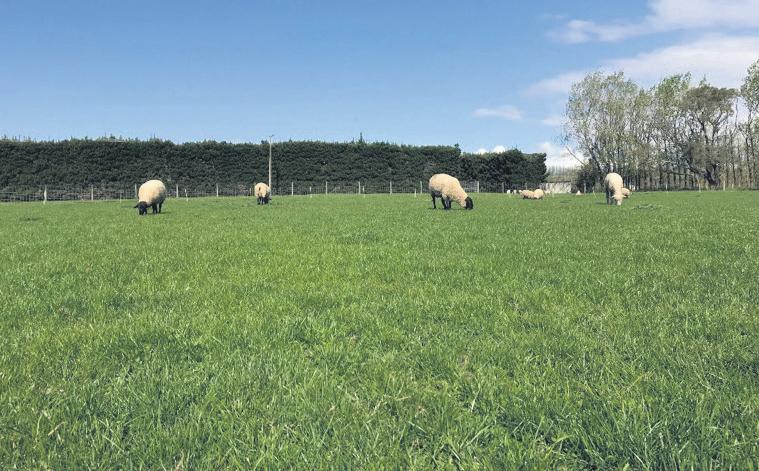































































There are 16 nutrients required by plants, 13 of
] Article supplied by DairyNZ
There are five nutrients N, P, K, S and Mg (pumice soils) that are added to soils in fertilisers.
The remaining nutrients are abundant on most New Zealand Soils.
Assessing
It is important to measure the current soil nutrient status to assess whether a farm is in the maintenance or development stage.
Soil testing and taking into account fertiliser history is the only way to assess nutrient status.
Capital fertiliser inputs can be much greater than the maintenance input, especially if a rapid increase in the soil nutrient status is required.
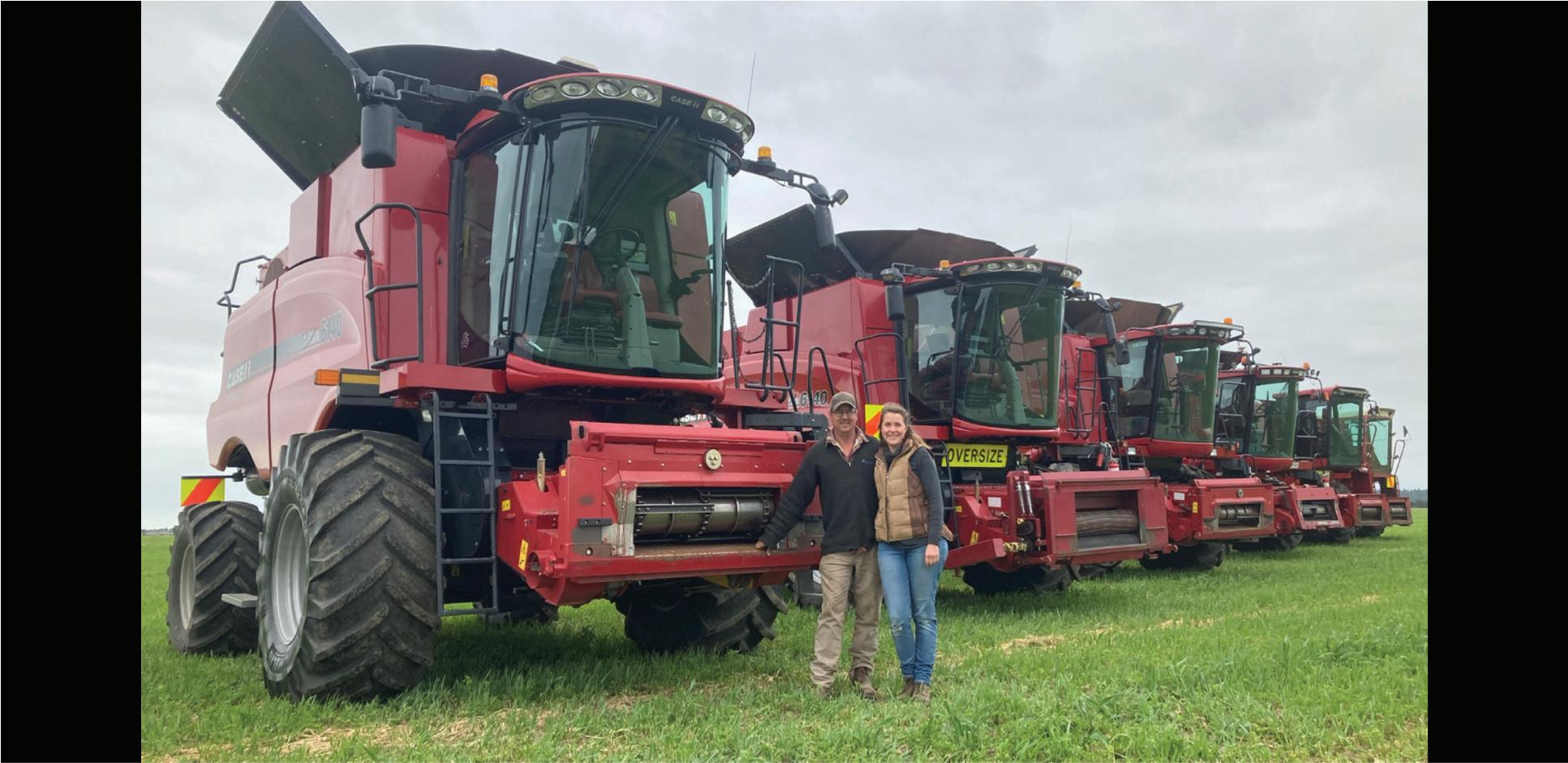



A robust soil fertility-monitoring programme is the best way to monitor nutrients in topsoil of any farm.
Fertiliser costs are a major investment and needs to be monitored. Even in the maintenance stage, more precise rates can be calculated from establishing trends in soil test levels over time through the use of annual soil testing.
Pasture testing is a back up to soil testing. While soil testing determines available soil nutrient status, pasture analysis should be used to assess how much nutrient has been taken up from a fertiliser application and check trace element status.
There are two key reasons to test and analyse pasture samples:
1. Concerns about animal health
• Insufficient concentrations of: Mg, Na, Cu, Co and Se,
• Excessively high concentrations of K, Mo and Mn.
2. Clover Nutrition
• Clovers have a higher requirement of all nutrients compared to grasses; they are a sensitive indicator of underlying soil fertility.
Growth: The amount of additional pasture grown in response to the application of Nitrogen is influenced by climate.










Our portfolio of powerful, proven products has helped farmers from one end of the country to the other create and maintain thriving businesses, and has earned us a reputation as New Zealand’s arable protection specialists. Our suite of innovative crop protection solutions provide local farmers with everything they need to win the war on weeds, pests and diseases.



Water’s surface tension is something we’ve all probably heard about in school science lessons.
]Advertorial supplied bu UPL NZ Back then, we possibly thought it had little or no relevance in farming or growing. David Lingan, UPL NZ Ltd’s Adjuvant Product Manager, says, “Think again”.
The strong cohesive connections between water molecules and resistance to stretching can wreak havoc with even the best planned spray programmes. David says that’s where a super spreader comes in – breaking the surface tension and letting the active cover and spread on the plant’s surface.
David says all too often spray’s actives often don’t reach the intended target, and that’s particularly relevant when using contact insecticides.
“Insects are highly mobile. You can use the best contact insecticide in the world, but if it doesn’t come in contact with the target insects or get ingested, that’s a lot of waste, and you’re going to feel that in your back pocket.”
To maximise results from insecticide applications, David recommends using the super spreader Du-Wett, an organosilicone blend, to deliver better spray coverage.
“That way you’re going to save yourself a lot of time, money, and potentially resprays. Most importantly, there’s going to be a better outcome,” he says.
“Using Du-Wett means actives get into even dense forage brassica crops and get better performance on waxy foliage. It gives you the spread and coverage you need.”
With temperatures predicted to get warmer, insect damage to crops and the resulting impact on yields and profits are going to be top-of-mind for farmers, growers, agronomists, and field reps.
David says white butterfly, diamondback moths, aphids, and fall armyworm in particular, are likely to pose real threats.
David acknowledges that everyone is cost conscious right now, but he says DuWett will easily pay for itself.
“You get the most out of every drop of the spray. Contractors themselves have said they can actually see the difference in coverage compared to not using a super spreader.”
David says, particularly with helicopter application and any low water volume applications Du-Wett’s saving on water use can


provide significant reductions in time and fuel used.”
There’s another variable he says is worth considering.
“Until relatively recently, the volume of water in spray programmes hasn’t been that big a deal. But now, with modern spray application technologies, rising fuel, labour, and spray costs, and shifts in attitudes towards to the use of water itself, and even restrictions, that’s definitely changing.”
David also says that the old-school approach which was ‘more water gets more coverage’ when spraying isn’t supported by outcomes.
To maximise results from insecticide applications use Du-Wett super spreader to deliver better spray coverage by reducing surface tension.
“Water’s high surface tension doesn’t give the spread or coverage needed for optimal performance. Because Du-Wett reduces the surface tension of spray droplets, one spray droplet containing Du-Wett can provide up to 20 times the spread of active compared to an insecticide applied without an adjuvant, and at least 6-8 times compared to a conventional, non-ionic adjuvant.”
For more information on getting the most out of insecticides with Du-Wett talk to your local technical advisor or contact David Lingan, UPL NZ Adjuvant Product manager, at 021 804 450.




There’s nothing better than knowing that your seasonal maize harvest has rendered maximum yield – it makes all those hours of hard work prepping the soil and sowing the seed worthwhile.
] by William milnes
Also there’s also nothing to compare to the peace of mind of knowing that a good source of feed is now under wraps, waiting to get your farm through rough times.
But there are also few times when Mother Nature seems more at odds with the farmer’s best-laid plans than during the runup to harvesting.
It’s a time when added vigilance is needed to make sure that pests and weeds don’t undo all your good handiwork, wasting valuable dry weight of feed even before the harvesting machine turns a wheel. For the busy dairy farmer it’s often up to contractors and technical advisors to fulfil this ‘watchman’ role.
Weeds are the first big threat, and they fall into two distinct categories.
Paddocks which have been in pasture prior to being utilised for the maize crop will benefit from a broad-spectrum grass weed herbicide, while non-pasture paddocks tend to harbour the seeds of broadleaf weeds instead.
An appropriate product which is not harmful to maize itself is recommended, as multiple applications may be needed to deal with hardy perennial weeds.
When plants are still small the greasy cutworm may make an unwelcome appearance – look for signs of plants completely ‘felled’ by these nasty pests, and confirm their presence by digging in the dirt around the base of plants.
Synthetic pyrethroid insecticides knock these worms dead, and are best applied before cutworm feeding time at dusk.
Later in the grow the main insect pest is the ‘army worm’, a kind of caterpillar with a big appetite. While dealing with the army worm it’s worth noting the difference between this species and the corn earworm, which will generally only appear as the crop is pollinated.
Thankfully, some species of wasp predate upon this pest, with nature cleaning up after herself in this case.
Fungal diseases also take their toll if the summer weather proves very humid – blights like eyespot being easy to tackle with fungicides, but only a real issue if environmental factors collude to produce very damp, sticky conditions.
By the time that this may be an issue, the crop should be too tall to facilitate ease of spraying with conventional means, and fungicides have sometimes had to be applied from the air in extreme cases.
With problems squared away it’s just a matter of waiting for crop maturity before firing up the harvester.
From the point of ‘silking’ (the emergence of silky fibres from the cob end), this is usually a period of about 50 days. Experts suggest that a more precise test is the examination of the so-called ‘milkline’ within the cob –snap a cob in two, and look for where the paler ‘milky’ line gives way to yellow, denser starch.
A similar milky ‘cap’ exists at the base of each kernel of corn on the kind of corncobs we eat with the Sunday roast.
When this line is one-third of the way down the kernel in your maize sample, it’s time to harvest – though other factors must also be taken into account, right down to the time of day.

The magic formula is all about dry weight – the part of the harvest which you (and eventually hungry livestock) will use. The harvest should be taken in when the percentage of dry weight is over 40% – this will lead to a dryer and more pest-resistant stack for silage users.
Many farmers will use the services of contractors and specialists to bring in the harvest – whether it’s the common crop of maize, or another variety of grain. But if you do maintain your own equipment to harvest crops, it’s a good idea to give this machinery a thorough test and shakedown prior to beginning the demanding and often time-consuming task of harvesting.
Most modern harvesting machinery, whether powered by a tractor or, in larger cases self-propelled, is the product of complicated engineering, and requires all systems (hydraulic, mechanical, electronic) to
be regularly serviced to ensure safe and efficient operation.
After all, there is little point in carefully preparing the paddock, raising a crop and protecting it from pests only to have the whole endeavour fall at the last hurdle.
When the harvest is in, storage for the long term is key – this is true from the simplest bunker of maize silage to the most advanced electronically monitored grain silo.
Once again, the name of the game is protecting your harvest from pests, such as insects, rodents, moulds and fungi, and throughout the history of farming this has been the case.
With a good supply of feed, kept under secure conditions, the oncoming winter seems far less of a daunting obstacle, justifying the investment of time, technology and effort into making this year’s harvest a bumper crop.









] Supplied by Vantage NZ
As harvest approaches, farmers are gearing up for one of the most critical times of the year.
While preparing equipment and monitoring crop conditions are essential, this season also presents an excellent opportunity to collect and analyse yield data that will drive smarter decisions for the future.
Leveraging technology to gather and integrate this data into arable farming systems sets the foundation for more efficient, profitable farming in the seasons ahead.
Yield data is at the heart of precision agriculture. By monitoring and mapping crop performance in real time, farmers gain insight into how variables like soil type, irrigation, and fertility are impacting yields across the farm.
This data offers a detailed view of field performance, helping farmers identify areas of success and areas in need of improvement.
More than just a record of production, yield data, when analysed, becomes a valuable tool for future decision-making.
Yield maps offer visual and numerical insights into issues like pest pressure or nutrient deficiencies, allowing farmers to adjust practices like input application, irrigation, and crop rotation for optimal


Yield mapping creates a map of the variability in crop yield across a field using data collected by hardware and software systems and can be used to identify areas of the field that are underperforming and to develop targeted management strategies to improve them.
results. In turn, these adjustments help reduce waste, increase productivity, and improve overall profitability.
Farmers can now use technology to make the collection and integration of yield data smoother than ever. Take, for example, the FarmTRX system, which allows farmers to easily outfit any combine, new or old, with yield monitoring capabilities.
In partnership with Trimble® Ag Software, FarmTRX offers seamless two-way API
integration that transfers yield data from the combine into the farmer’s broader farm management system.
Farmers can now also use PTx Trimble GFX displays to run the FarmTRX app directly in the cab during harvest. This eliminates extra equipment and clutter, allowing farmers to utilise the precision ag tools they already own.
This integration is available through Trimble Ag App Central, offering an easy,
Get harvest-ready with Vantage NZ’s precision technology, expert support, and data-driven solutions, including after-market yield mapping solutions, data analysis, and actionable insights to optimise performance and boost profitability.
To learn more, talk to one of our technical experts or visit vantage-nz.com.

streamlined way to incorporate yield data into decision-making processes without additional complexity.
The two-way API integration with Trimble Ag Software allows for the transfer of corrected yield data, including grain moisture, combine speed, and elevation, among other key metrics. This data is then merged with the farmer’s existing farm management data, enabling deeper insights and better decision-making.
Farmers can pull data from Trimble’s system to get started with FarmTRX quickly, making it easier to integrate with established field structures.
As you prepare for harvest, it’s also time to start thinking ahead to the next season. Vantage NZ is now taking pre-orders for retro-fit yield monitoring solutions, and we’re offering a 10% discount for orders placed before December 6th.
Don’t miss this opportunity to equip your farm with the latest technology to improve efficiency, productivity, and profitability. By analysing yield data and using the right technology, you can set your farm up for success today and in the seasons to come.
Precision agriculture offers farmers the tools needed to make smarter, more informed decisions—now and in the future.



Planting a tree seedling is easy – just dig a hole, place the roots in the hole and cover with soil.
Successful establishment of tree seedlings so that they are still alive and growing vigorously a few years later and grow on to become mature trees, however, requires a lot more attention to detail.
Good forward planning pays dividends, so always plan just what you need to do well in advance of actual planting.
Key factors for success are:
• Make sure the species chosen is suitable for the site.
• Use good quality tree stock.
• Take great care in the handling, transport and storage of seedlings.
• Ensure the planting site is well prepared, where possible by deep cultivation with a winged ripper, and perhaps pre-plant spraying with a weedicide.
• Prevent weeds from competing with the seedlings for at least a year after planting.
• Protect seedlings from browsing by stock and wild animals.
Bare-rooted stock are preferred to container stock for large-scale planting because they are usually much cheaper to produce, more seedlings can be carried when planting away from roads and it is difficult to produce container stock large enough and sufficiently well-conditioned to establish well on harder sites.
However, some species, particularly many of the eucalypts, perform much better when container grown.
Under ideal planting conditions, small seedlings transplant better than larger ones, with less interruption to their growth.

In practice, a minimum size is required because the seedling must contain sufficient food reserves not only to survive until planted, but also to make new root and shoot growth after planting. Root collar diameter is the best indicator of food reserves.





The stem must be sufficiently hardened to withstand handling and storage without damage, resist disease and insect attack, and tolerate harsh weather conditions after planting.
The seedling must be large enough to be planted deeply in uneven ground without being buried, and to be able to cope with any likely weed growth.
The future root system of the tree is largely determined by the way the roots are positioned at the time of planting.
Common faults in planting are:
• not planting deep enough. Such trees are much more prone to topple in strong winds and to suffer moisture stress under dry conditions.
• not creating a planting hole big enough to accommodate the root system without distortion. Roots bent horizontally around the lower stem will later strangle the main stem, resulting in wind throw. If the nurseryman has not trimmed the roots sufficiently, use a sharp pair of shears and trim the roots in a cool shady place before going out to plant.
• dragging the roots into a planting slot so that they all point in the same direction, resulting in unstable trees with ‘hockey stick’ root systems.


















The log market has remained stable over the last month, with little change to domestic and export prices.
] with Allan Laurie mNZIF
] Laurie Forestry Ltd
Given the high price volatility of the last 12 months, there is general sense of “let’s hope it lasts” with prices good enough keep our people working whilst forest owners are getting a reasonable return on their 26 to 30 year investment.
Current national harvest levels are in very approximate symbiosis with demand, but there is a potential for those planets for fall out of alignment as we approach the higher production summer months in NZ.
The big unknown facing the world wood fibre trade, surrounds Trump mania and just how the imposition of tariffs on China exports to the US will play out. The China market generally remains in a very much sitting on its hands mode with nervousness being the order of the day. This reveals itself in a reluctance to negotiate purchases of NZ logs beyond the immediate term.
On the surface the China market looks in reasonable shape. Softwood log Inventory levels across the Eastern Seaboard remain a very healthy 2.9mil m3 and daily consumption is running at 60,000 m3. This equates to about 1.5 mil log m3 usage per month which is currently running at about the same level as supply.
Just to emphasise how important China is to the NZ forest sector, 1.5mil cubic metres of logs would build about 65,000 average kiwi houses equating to 750,000 houses per year. And that level reflects a China consumption that remains relatively subdued compared to the last 3 years.
Sitting underneath what looks like an okay market, is a continuing slide in China domestic prices. There is the potential for NZ production to pick up in the summer months dovetailed to the likelihood China manufac-
‘There has been a noticeable reduction in buyers prepared to sign contracts.
turers are about to face some tariff headwinds with about 40% of their furniture, mouldings and componentry sales to the US.
Since the US election there has been a noticeable reduction in buyers prepared to sign contracts or issue Letters of Credit for Kiwi logs. Market indicator A grade logs have remained stable in November at a selling price of US$CFR125 per m3.
Most commentators are suggesting the current CFR levels are likely to face some headwinds for December and January settlements.
Over the last month, both Uruguay and the US Pacific North West have re-entered the China softwood log supply sandpit that has been dominated by NZ for many years. This is not good news in the longer term if successful.
Most commentary suggests they will struggle to secure a sustainable cost-effective supply chain, but any additional volume is certainly not required right at the moment. India has continued to become more important to us with several shipments planned or on the water. The India trade is dynamically different to China.
China trade is dominated by larger Government owned companies issuing LCs with sales to trading companies who use, and sometimes own sawmills that effectively operate as custom sawing operations for large developers and manufacturers on fixed log to lumber price contracts.
A typical China log vessel will be sold to a single entity with lotting reflecting only the various log grades. Loading a China vessel is a relatively straight forward exercise with markings on logs only to inform the discharging stevedore of a grade change.
India trade is to a sawmill or plywood mill owner who work through agents who will typically have some skin in the game via ownership of some of the mills they are supplying to.
A typical India vessel can have up to 30 lots with the cargo assigned to known customers. They each will typically have a supermarket list of what they want.
Loading an India vessel is much more complex exercise with lotting and log markings required to inform the discharging stevedore where there is customer change.
For a typical vessel that could mean up to 100,000 logs have to have a colour painted on one end or both, so the discharging stevedore can ensure each customer gets what they have ordered.
Despite the complexities and higher costs, there is a very strong desire by many of us to build an India sup-
ply line as an alternative to what is clearly going to be the continuing shaky Isle of China.
As always, please remember the thoroughly important message, “despite the challenges, it remains, as always, fundamentally important, the only way forward for climate, country and the planet, is to get out there and plant more trees”.








The Dairy Companies Association of New Zealand (DCANZ) welcomes the announced conclusion of trade negotiations between the Gulf Cooperation Council and New Zealand.
] by Kent caddick
The conclusion of this deal with the wider Gulf Cooperation Council (GCC) region fol-
lows on from the recent conclusion of trade negotiations between New Zealand and the United Arab Emirates (UAE).
DCANZ Executive Director Kimberly

Gain knowledge and practical skills.
Lameness is now amongst the top three health issues on-farm and it is costing New Zealand dairy farmers millions of dollars every year.
North Canterbury / West Coast: 13th - 17th January 2025
Mid / South Canterbury: 20th - 24th January 2025
BOOK NOW: Upskill for just $395 +gst per person
This workshop is designed to give students an overview of issues relating to lameness management and introduce them to the 5 step
Raising the standard of hoof care.
Call us on 03 662 8015 Or visit dhi.ac.nz
trimming process according to the Dutch Method. The workshop has both theory and practical aspects. Register today at dhi.ac.nz


Crewther said New Zealand exported approximately NZ$1.9 billion worth of dairy products to the GCC region in the last year.
“This makes the GCC region New Zealand’s second-largest dairy market after China. Locking in elimination of the already low tariffs on key dairy products into this highly valuable market provides important commercial certainty for dairy exporters,” Crewther said.
“DCANZ congratulates Trade Minister Todd McClay and New Zealand trade negotiators on the conclusion of these negotiations. With New Zealand and the GCC first launching FTA negotiations back in 2007, it is good to see negotiations finally concluded.”
She said New Zealand is also the first major dairy exporter to secure a free trade agreement with the GCC and we commend the Government for continuing to pursue this outcome.
“We appreciate the Government’s commitment to a trade agenda that continues to deliver for exporters, including in regions where New Zealand does not have an existing free trade agreement footprint.”
Beef + Lamb New Zealand (B+LNZ) and the Meat Industry Association (MIA) are also welcoming the agreement as the deal eliminates tariffs on red meat exports to a range of countries including Bahrain, Kuwait, Oman, Qatar, Saudi Arabia and the UAE within 10 years.
In the year to September, New Zealand’s red meat exports to this region were worth $245 million, with current tariff costs of $7.5 million.
B+LNZ Chair Kate Acland said the region is a high-value market so improving access for farmers’ products is great news.
“The GCC is forecast to be one of the fast-

est-growing regions for beef and sheepmeat consumption due to its population growth, rising incomes, and rapidly developing tourism Sector,” Acland said.
“This agreement comes hard on the heels of a trade deal with the UAE. Trade is the life blood of our sector and any move to make it easier to export is welcome.”
MIA’s Independent Chair Nathan Guy said exporters will be delighted.
“The GCC is one of our largest halal markets and the agreement provides new avenues for growth and cooperation,” he said.
“New Zealand has an internationally-recognised halal system that adds tremendous value. Halal certified exports account for almost $4 billion annually.
“This deal also provides New Zealand with a competitive advantage as no other major red meat exporters to the GCC have secured such an agreement.”


We’ve been getting things Done Right for decades by always stepping up to the plate and getting it right the first time, every time.
Get in touch today and get the job Done Right.









A common thread in discussions with dairy farmers this spring has been the unusually high number of animals suffering calcium/magnesium related metabolic disorders.
That’s a large financial hit prior to the season getting underway, because for every animal exhibiting clinical signs it is calculated that there are a further seven animals suffering but not requiring treatment.
Those animals, regardless of the effectiveness of treatment, will produce fewer kilograms of milk solids this season than had they not suffered.
When the cost of vet visits along with the time spent by owners and operators are factored in, the final figure is often disturbingly large.
Because the problem is widespread and in many cases getting worse for many it has become normalised.
It doesn’t have to be. There are farmers who treat very few animals, don’t expect issues, seldom lose an animal, and when that does occur there were always other contributing factors.
As with all things in farming there are multiple factors at play. Calcium and magnesium interact within the animal, and the requirement of each element varies with age of the animal.
Weather has a large part to play with the overriding requirement being available energy which fluctuates in response to direct sunlight and associated warmth.
Consecutive days of cold wet weather in spring significantly increases animal energy requirement at the same time soluble sugar levels in pasture are dropping.
In foul weather animals may huddle together with a reduction in feed intake. Combined with a lengthy walk to the shed more animals requiring attention can be expected.
There are a number of steps that can be taken which will largely eliminate the stress and frustrations felt by those responsible for the well-being of what are valuable animals.
Golden Bay dolomite has long been known as general health improv-

er, whether applied through standard ground spread equipment and/or made available in a bin for animals to lick as they require.
The reason vets and farm advisors have not embraced this approach is primarily due to it containing both magnesium and calcium, so price comparisons are hard to make.
However, it is the marked improvement in overall animal health during spring that is its greatest value.
Right now, it is also the cheapest magnesium fertiliser available to farmers. The argument that it comes from Golden Bay and therefore has a high freight component ignores the fact that commonly used magnesium oxide products come from a far greater distance.
Were magnesium oxide products genuinely effective fertilisers the incidence of calcium/magnesium metabolic disorders would be decreasing.
On properties where dolomite has been applied annually at around 200kg/ha soil test magnesium steadily increase along with improved animal resilience and performance.
Dolomite may be applied at any time during the year with the positive effects lasting at least twelve months and the effect almost immediate due to the fineness of grinding.
It is a proven soil conditioner with land damaged behind wires in wet weather steadily becoming more friable without further intervention.
Clover seed can be added at the time of spreading ensuring performance of the newest cultivars is available.
It is the most effective first step in relegating springtime metabolic disorders to the occasional and seldom major category.
For more information call Peter on 088 436 566 or 027 495 0041.
Golden Bay dolomite is the most effective first step in relegating springtime metabolic disorders in cattle, such as these Silver Angus.







The chainsaw is an indispensable labour saving aid used by thousands of New Zealand farmers, firewood gatherers and other non-vocational users.
] Article supplied by WorkSafe
It makes light work of felling and cutting up trees, but a chainsaw deserves to be treated with respect. Carelessly used, inadequately maintained or incorrectly equipped, a chainsaw can be a lethal weapon.
If you have just bought a chainsaw, you should read the manufacturer’s instruction manual carefully and familiarise yourself with your chainsaw’s operation.
If you have not used a chainsaw before, practice the cutting techniques on a stump or log before you attempt more serious work.
If you use your chainsaw sensibly, follow correct techniques and maintain your saw to the manufacturer’s instructions, it will provide you with safe and trouble-free service.
If you’re a chainsaw novice, it’s an excellent idea to get training from a qualified person. This way you learn by hands-on experience and avoid developing unsafe habits right from the start.
Your chainsaw dealer may be able to provide this instruction or put you in contact with a qualified instructor.
Work area safety
It’s important to check the work area for hazards before you start felling or cutting.
• Don’t do anything that will harm another person in any place where you are using your chainsaw (this includes harm to yourself).

Safety first: carelessly used, inadequately maintained or incorrectly equipped, a chainsaw can be a lethal weapon.
• Check that there are no people or animals in the work area.
• Do not work in adverse weather conditions such as heavy rain, snow or high winds.
• Always ensure you have a clear work area where you have a stable footing and do not have to reach or work off balance.
• Make your way carefully on uneven or sloping ground.
• Shut the chainsaw off before carrying it. Carry it by the front handle with the bar to the rear – not on your shoulders.
If you are felling trees
• Make sure other people are at least two tree lengths away.




• Always have an escape route planned and cleared to the side and rear.
• Check for hazards in the area – such as electricity or telecommunication cables. If in doubt, seek advice from the controlling authority.
• Always check for any material such as branches or tops which may dislodge and fall into the work area as the tree falls.
General chainsaw maintenance
Finally, keep your chainsaw clean and well maintained. Not only will it be safer to use, but it will also prolong the chainsaw’s life.
• Regularly clean your chainsaw, particularly the air filter cooling inlets, sprocket cover and chain brake mechanism.
• Clean the guide bar groove and oil holes.
• Check the guide bar for straightness, burring and wear of the rails.
• Turn the guide bar regularly to ensure even wear.
• Check the sprocket and chain for wear.
• Check the chain for cracked rivets or side links.
• Check all nuts, bolts and screws for correct tension.











Every few weeks I hear the same misconception, consent conditions cannot be changed.
Because most water resources in Canterbury are considered by the Regional Council to be over-allocated, there seems to be a common belief that this makes it impossible to change consents.
I also hear that if you apply to change the conditions of a groundwater take consent, this opens the door for the Council to impose more restrictive conditions.
These are misconceptions which mean many consent holders live with the frustrations resulting from consents not reflecting what they would like to do.
We hear feedback such as:
• I wish we had a higher rate of abstraction from our bores
• If I increase the rate of take from one bore, I will need to reduce the rate of take from another bore
• If only there was more flexibility regarding how much water comes from each bore
• If I want to increase the flow rate from a bore, I will need to transfer allocation from somewhere else
• I use the gate valve to ensure that the rate of take does not exceed what is consented.
The reason for writing this article is that we hear this sort of feedback surprisingly often. This suggests that many are unaware that changes can be made to consents, yet it
is often possible to alter a consent to make it work for you.
In some cases, changes can be made with much less onerous assessment than the original application. For example, we recently successfully changed a consent increasing the combined flow rate from bores from 120l/s to 155l/s and this was achieved without the need to conduct any well interference assessment.
This change helped prevent exceeding the maximum take of 120l/s and the associated headaches with non-compliance, but at the same time it built-in more flexibility in how the irrigation system is managed.
Another thing we hear is that the seasonal volume on a consent is restrictive, or that the consent has adaptive management conditions that restrict the allocation in some seasons. Even in over-allocated zones, there is a way to overcome this lack of reliability. This can often be achieved by transferring allocation from another consent.
In most of Canterbury, there are consents available for this purpose. Given this situation, there may well be a solution available if you are short of seasonal volume.
If you feel that additional allocation would be useful, or if you have allocation on your consent that is unused, it would be worthwhile looking into the potential for transferring allocation now. This is because the ability to transfer may be removed in future changes to the Regional Water Plan.
Also, if you hold a consent with unused

allocation, this will have to be surrendered when the consent is renewed. We know that a high proportion of consents in Canterbury are not fully utilised.
Given this situation, there must be hundreds of consent holders that could offer allocation for transfer. Are you holding spare allocation? This may be a valuable asset that will evaporate when the consent is renewed, or when the Regional Plan is changed.
Contact us to find out whether your consent can be changed or discuss the potential to transfer allocation. For transfers, whether you are considering buying or selling, time is not on your side, so act now.
‘many are unaware that changes can be made to water consents, and it is often possible to alter a consent to make it work for you.















Over summer many farmers will be looking for ways to be more efficient with their irrigation this season.
] Article supplied by
] Environment Canterbury
Efficient irrigation significantly reduces the risk of nutrient leaching, and saves money and water.
Watch your triggers
Use soil moisture and temperature triggers to start the irrigation for the season. For soil temperature, 11degC is recommended. Note that the soil moisture trigger of around 5060% of Profile Available Water (PAW) needs to be triggered as well.
Irrigating when soil temperatures are too low will depress plant growth, as irrigation water will further cool the soil.
Maintain your system
Plan your irrigation to start with a spring check of performance and equipment. Well performing systems save money and time and are more water efficient.
Efficient irrigation delivers water at a rate and spread that reduces drainage and evaporation losses. Check your irrigator and fix problems before doing a ‘bucket test’.
The Check-It app is easy to use and can be downloaded from app stores. It will test how much water you are applying and how evenly it is being applied and distributed.
If you do not have a commissioning test for your irrigator, get a professional to carry out a capability assessment. Regular daily, monthly and seasonal checks are essential.
Assess your soil moisture
Knowing your soils and how much water the soil type can hold is critical to irrigation scheduling.
Good soil moisture monitoring systems

(tapes, probes) installed, calibrated and used correctly are the most efficient way to measure soil moisture.
If you do not have soil moisture monitoring, soil water budgets are a low-cost method used to schedule irrigation. They use inputs of rainfall, evaporation, weather forecasts and plant demand to produce a daily water budget.
Aim to keep the soil moisture between the plants’ stress point (around 50% PAW) and the field capacity. Allow a gap of around 1020% below field capacity to reduce drainage risk from rainfall after irrigation.
Keep good records
Good records, kept over time, help you decide on daily, monthly and seasonal main-
tenance requirements. Record keeping also helps ensure all staff are aware of trends in the past and help inform decision-making going forward.
Need more help? You can get in touch environment canterbury’s Land management Advisors for free advice on 0800 324 636. Irrigation NZ also has some great resources at www.irrigationnz.co.nz



We can offer you a complete service for replacement hardware, installation and consent monitoring, along with automatically submitting your data to Ecan.
• Hardware

• Monitoring
• Soil moisture monitoring with Aquaflex
• Meter verifications



Measure or Model? You need to do both. They compliment each other. In irrigation management, it is interesting to consider the old adage that “You can’t manage what you don’t measure”. Or could that be, what you can only model?
] by Stephen mcNally
] IrrigationNZ
] Principal Technical Advisor
There are some considerable differences between measuring on-site data and relying on models and this applies to our decisions on freshwater use as well as when it comes to compliance verification.
Each approach offers valuable insights, but understanding their limitations and applications is crucial for optimising water use and enhancing productivity. The question often isn’t whether one method is superior to the other, but rather how they can complement each other to deliver informed and defensible decisions on resource management and system performance.
Weather modelling through virtual climate stations provides extensive data that can forecast rainfall, temperature, and evapotranspiration across a region. These models are essential for planning irrigation schedules over a season and give growers an overview of changing climate conditions.
However, they can lack the precision of site-specific monitoring. On-site weather stations can capture microclimate variations –such as local wind patterns or unexpected rainfall events – that might significantly affect irrigation needs.
Models are generally only as accurate as their input data, and localised observations help bridge the gap between predicted and actual conditions, creating greater confidence in decision-making.
When it comes to monitoring soil moisture, farmers often face a similar choice: soil moisture sensors installed in paddocks or water balance calculations. Soil moisture
sensors when correctly selected and positioned can provide direct feedback from the root zone, identifying when crops risk experiencing stress or when water application is needed.
However, sensors can be limited by placement and soil type suitability; a limited number of sensors cannot fully represent the variability across a paddock, especially in diverse soil types.
Water balance models, which track irrigation inputs, precipitation, and crop water use over time, offer a broad perspective. However, they make big assumptions about whether the irrigation system is functioning as designed, and that water is being uniformly distributed.
Integrating sensor feedback with water balance models helps ensure growers aren’t relying too heavily on assumptions that may mask field-specific issues.
Another area where measurement and modelling must work together is irrigation system efficiency.
Well-designed irrigation systems are designed based on detailed site-specific engineering factors that provide data to model flow rates, pressures, and application uniformity under ideal conditions. But these designs can only remain effective if the equipment performs as expected over time.
Regularly taking flow and pressure measurements from key points within the system helps confirm that it operates according to the original design specifications. These readings also allow farmers to identify maintenance needs, such as clogged emitters or pump inefficiencies, which can reduce water application efficiency and increase operating costs.



‘Good decision-making in irrigation is about making defensible choices based on the best available information.
Relying solely on modelled design expectations without ongoing measurement can lead to missed opportunities for optimisation and reduced system performance over time.
The effectiveness of irrigation practices can be assessed both in real-time and through post-season reviews, each providing different but essential insights.
Real-time data enables farmers to respond immediately to changing conditions, adjusting irrigation schedules to maximise crop water uptake and prevent overwatering or stress.
This proactive management reduces wastage, enhances productivity, and supports better resource allocation. However, reviewing performance at the end of the season offers the chance to evaluate long-term outcomes, such as crop yields, water use efficiency, and the cumulative impact on soil health.
These reviews inform future strategies, helping farmers refine practices based on evidence rather than just modelled assumptions. Effective irrigation is not a matter of
choosing between immediate or retrospective analysis, but about using both to achieve continuous improvement.
In managing irrigation, confidence plays a pivotal role in decision-making.
Confidence is not just about trusting the tools or data but about understanding the variability and limitations of each source of information.
When data from soil moisture sensors aligns with water balance models, or when weather station observations confirm modelled forecasts, farmers can act with a higher degree of certainty.
Confidence also extends to the operational side – knowing that an irrigation system is running according to its design provides assurance that water is being used as effectively as possible. Where inconsistencies arise, confidence means having the information and tools needed to adjust systems or practices in a timely manner.
Good decision-making in irrigation is not about achieving perfect outcomes every time, we are dealing with biological uncertainty. However, it is about making defensible choices based on the best available information.
Balancing measurements with models offers a pathway to more refined irrigation management, ensuring water is used where and when it is needed most.
Integrating these approaches allows farmers to navigate the complexity of natural systems, maximising productivity while maintaining a responsible approach to water use.
In an environment where climate conditions are becoming increasingly unpredictable, the ability to measure and model with accuracy provides the foundation for resilient and effective irrigation management.

“Survive until ’25” is often used by economists, and this adage certainly has a ring of truth to it as financially, we seem to be on the upward trajectory after a challenging couple of years.


] by Nicky Hyslop
Beef + Lamb New Zealand Director
Central South Island
Lamb prices are ahead of where they were at this time last year, store lambs are selling relatively well, interest rates have eased with more drops expected and as we head towards Christmas, most of us are enjoying a good growing season with regular rainfall.
Many farmers are reporting good lamb survival, even if scanning was back due to the dry autumn. Unfortunately, high-country farmers were hit hard by spring snow which coincided with lambing and all the best management in the world cannot lessen the impact of storms such as one we experienced over Labour Weekend.
While the rain was welcomed on the easier country, the accompanying snowfall was significant and will have an impact on tailing tallies.
Another positive for our industry was the recent passing of the Resource Management Act Amendment Bill which required regional councils to pause work on regional freshwater plans and covered other aspects such as removing the low slope map from stock exclusion regulations.
This Bill ensures we can work alongside central Government and regional councils to develop new national policy frameworks for freshwater management that are both practical and enduring.
The Bill also means the identification processes around Significant Natural Areas has been pushed out for three years while the National Policy Statement for Indigenous Biodiversity is reviewed. B+LNZ has been pushing for all these changes for some time.
As farmers, we just need to continue to showcase our environmental management practices and prove that we are committed to protecting our natural resources without the need for punitive legislation.
While B+LNZ will continue its work advocating for farmers at national and regional policy level, farmers will be seeing a renewed focus behind the farm gate with new extension activities.
I encourage farmers to look out for these activities in the new year and get involved. They will be on the Events section of the B+LNZ website or in the weekly e-diaries.
One of the challenges all livestock farmers will be dealing with is drench resistance. Triple drench resistance is becoming increasingly widespread in sheep and this is of concern, particularly for lamb finishers.













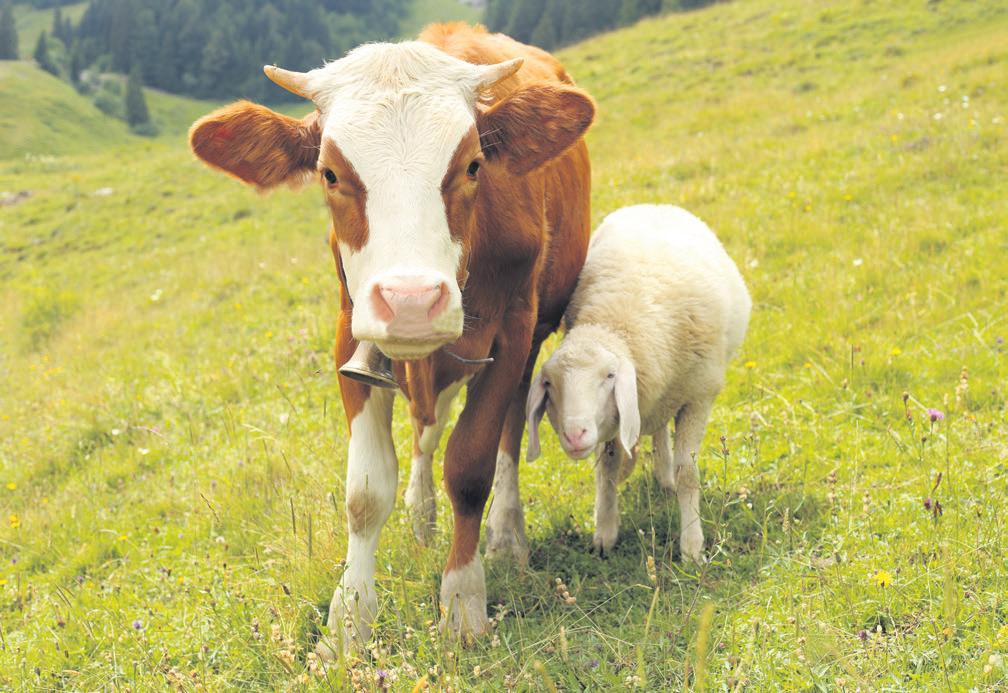
We all need to reduce our reliance on chemical drenches and implement management practices that allow us to control internal parasites without compromising productivity.
B+LNZ is very lucky to have Dr Ginny Dodunski as its Wormwise programme manager. She is a font of knowledge when it comes to anything related to worms and is extremely pragmatic about what works on farm and what doesn’t.
She has great, timely management tips on the Wormwise Facebook page, but has
also refreshed the Wormwise resources on B+LNZ’s Knowledge Hub and they are certainly worth tapping into.
As 2024 comes to a close, I encourage all farmers to reflect upon what they have achieved over the past year.
Some have spent a significant part of the year feeding out and that alone should be acknowledged as well as getting through what has been a very challenging couple of years.
Wishing everyone a restful Christmas and a happy, healthy and prosperous 2025.

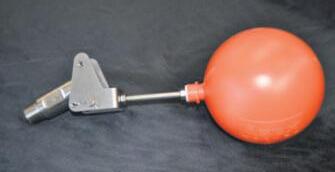





























DINZ is pleased to confirm that China market access for frozen velvet has been officially restored.
That is the big piece of news from the deer industry, and something we have been working on as an organisation as the number one priority this past year.
Some Chinese importers are currently in the process of having their plants inspected by local authorities, but many have already passed their audits. This process should be completed for all plants over the next week or two.
DINZ CEO Rhys Griffiths recently returned from China and South Korea, where he met with velvet importers and government officials to get a better understanding of the velvet market access situation and current market conditions.
In China, DINZ was part of Minister McClay’s trade mission at the China International Import Expo, while in Shanghai prior to the expo, DINZ signed a second Memorandum of Understanding with Beijing Tong Ren Tang, one of China’s largest traditional medicines companies, who are starting to feature New Zealand velvet in contemporary health foods while also touting the provenance of its “New Zealandness” in their branding.
“Sadly, market conditions for velvet in Chi-
na are not where we would like them to be at present,” says Griffiths. Commodity traders that profit from instability have looked to capitalise on the uncertainty [from the previously unresolved market access situation], and this is something DINZ will be monitoring closer in coming weeks.”
Demand for New Zealand venison remains firm in Europe as the chilled venison season winds down, with good brand recognition and product awareness being maintained in the market, according to DINZ’s Europe-based chef Shannon Campbell. The cost of living is still front of mind, forcing consumers to prioritise their respective spending.
Supply continues to be a concern for importers, says Campbell. With North America, and particularly retail, now an area of focus for New Zealand venison, the commodity markets of Europe are feeling it. This is a good problem to have, demand outstripping supply, but it is only a good problem for a short time in the commodity channel, where substitution to lower priced game meats can occur.
DINZ is hearing anecdotal evidence of farmers inquiring about getting into deer. While anecdotal, there is a sense of momentum out there, and we are currently firming this information up through our networks. This should help with supply going forward.

To weather, and if you missed NIWA’s seasonal climate outlook, one of the main takeaways would be the growing chance of a La Niña developing, though current predictions are for a phase with shorter and weaker than normal La Niña thresholds.
“We continue to trend toward La Niña,” says Chris Brandolino, NIWA Principal Scientist – Forecasting and Media.
“Irrespective of La Niña formally developing or not, we’re expecting the atmosphere to react accordingly, as in a La Niña-like response.
“Historically, La Niña tells us that the upper and eastern North Island have increased odds for unusual wetness, including big rain events, while the lower and western parts of both islands (particularly the South Island) favour unusual dryness.
“And finally, DINZ would like to wish Jamie
Ward well as he moves on from AgResearch to start with Fish & Game, overseeing their Central Otago district. Ward has worked in the deer industry for almost 28 years, starting in Genomnz (the DNA-pedigree testing lab) in 1996.
“I’ll definitely miss the people,” Ward told DINZ eNews. “That’s probably the biggest thing. Honestly, I’m not a science-driven guy. I’m more driven by improving things for the people and for the country. And I’ve met some great people through the years.
“The other thing I’ll miss is the innovation. The deer industry was founded on innovation, and it has always been keen to lead, unafraid of change.”
With his new role based in Wanaka, he will likely run into more than a few deer farmers in his work, for which DINZ wishes him all the best.







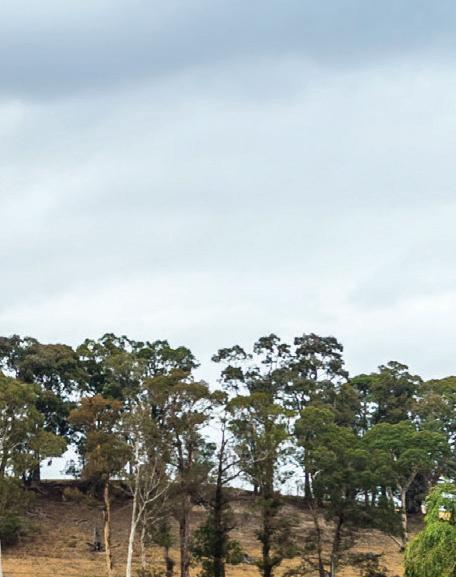








Suzuki’s latest addition to its V-STROM line up is the light weight but power-packed V-STROM SX.
] Advertorial supplied by
] Arthur Burke Ltd
The S stands for ‘sports’ and the X stands for ‘crossover’ and this sport adventure tourer blends versatility with stylish, modern looks.
It’s equally at home cruising in town as it is handling rugged farm tracks and off-road trails.
As well as it’s sporty looks it features slim proportions, is lightweight and maintains the reliability synonymous with the V-Strom series which began back in 2002 with the release of the V-Strom 1000.
From beginners to returning riders and on to the well experienced rider looking for a lightweight breath of fresh air the V-Strom SX delivers that and more.
The Suzuki Oil Cooling System (SOCS) keeps the engine cool in hot weather while its nimble chassis makes it simple to get around on, and the short style dual exit muffler and separate seat adds to its sporty looks.
Oil cooling allows the engine to warm up quickly so that it can be at the optimum temperature for fuel combustion sooner, improving fuel economy and ensuring the engine is warmed up sooner when riding shorter distances.
On unpaved, flat dirt roads, the 19-inch front wheel and ample ground clearance add a sense of stability to the ride, while a functional windscreen and knuckle covers make it ideal for touring as well. A handy rear carrier, which also functions as a grab bar, adds to its touring capabilities.
Its Suzuki Eco Performance engine balances excellent fuel economy with strong engine performance at a high level while its low-friction piston and piston head add to its fuel economy.
The lightweight, powerful 249cc 4-stroke, 1-cylinder, 4-valved oil-cooled SOHC engine has plenty of low-end torque and accelerates

smoothly for a linear, highly useable engine character with quick pick up from low to high rpm.
MotoGP-derived weight reduction elements incorporated into the engine design make the V-Strom SX lighter overall.
The new slim lightweight chassis and rigid frame enables nimble handling and ease of doing low speed manoeuvres, while also giving the bike a tough and rugged character.
Its ample 205mm ground clearance adds confidence in traversing obstacles while the 19-inch front and 17-inch rear wheels with semi-block style tyres work well on both paved roads at higher speeds and unpaved

The new slim lightweight chassis and rigid frame enables nimble handling and ease of doing low speed manoeuvres, while also giving the V-STrOm SX a tough and rugged character.

roads at lower speeds for solid all-around usability.
Dual-channel ABS matches stopping power to available traction for greater confidence and control.
The V-Strom SX’s new compact yet easy to read multi-function instrument cluster offers plenty of information at a glance. A USB outlet on the left-side of the cluster can be used to charge a smartphone.
For more information visit Arthur Burke Ltd, North Canterbury’s only authorised Suzuki dealer. The V-Strom SX is currently part of the SuzukiFest promotion with a $600 price reduction and stock is available.


Suzuki V-STROM 250SX Specifications
• Engine: 249cc 4-stroke, oil-cooled, SOHC, 1-cylinder
• Bore x Stroke: 76.0 mm x 54.9 mm
• Transmission: 6-speed
• Fuel System: Fuel Injection
• Starter System: Electric
• Overall Length (mm): 2180
• Overall Width (mm): 880
• Overall Height (mm): 1355
• Wheelbase (mm): 1440
• Ground Clearance (mm): 205
• Seat Height (mm): 835
• Curb Mass (kg): 167
• Suspension: Front: Telescopic, coil spring, oil damped; Rear: Swingarm type, coil spring, oil damped
• Brakes: Front: Disc, single; Rear: Disc
• Tyres: Front: 100/90-19M/C 57S, tubeless; Rear: 140/70-17M/C 66S, tubeless
• Fuel Tank Capacity (L): 12







































I found this both amazing and wondering about how our scientists think.
The BBC reported that researchers at the University of Richmond in the US have managed to teach a group of 17 rats how to drive little plastic cars. The leader of the study told reporters that the rats felt more relaxed during the task, a finding that could help with the development of non-pharmaceutical treatments for mental illness.
The rats were not required to take a driving test at the end of the study.
Researchers built a tiny electric car by attaching a clear plastic jar to an aluminium plate, fitted to a set of wheels. A copper wire was then threaded horizontally across the jar – the cab of the car – to form three bars, left, right and centre.
To drive the car, a rat would sit on the aluminium plate and touch the copper wire. The circuit was then complete, and the animal could select the direction in which they wanted to travel. After months of training, the
rats learned not only how to make the ‘ratmobile’ move but also how to change direction.
Just where science will take us next is indeed thought provoking. Plant and food for example, have come up with a device that can test fruit to see if it too ripe to export.
Knowing that over ripe fruit would destroy the whole shipment, it is vital information.
I assume that any border line fruit comes onto the local market which has a quicker turn around.
The device in question uses fast multi edged and multi sided mirrors which spin at a very fast rate and react to twin laser beams. I imagine it is like a cat scan. The information is then sent into a computer, and suspect fruit is channelled into the over ripe bins.
So far Plant and Food report great success with apples, kiwifruit and onions with other fruit on the radar
I think the work that is developed in the labs based in Lincoln is overlooked by many, especially the end users who I am sure take

new technology as something that comes out of thin air. Look at cell phone technology now days and what information farmers have on their array of Apps.
I remember as if it were yesterday when I was shown how a cell phone could turn an irrigator off and on.
I thought Jules Verne may not have been fiction after all.


S O P E N N O W .









